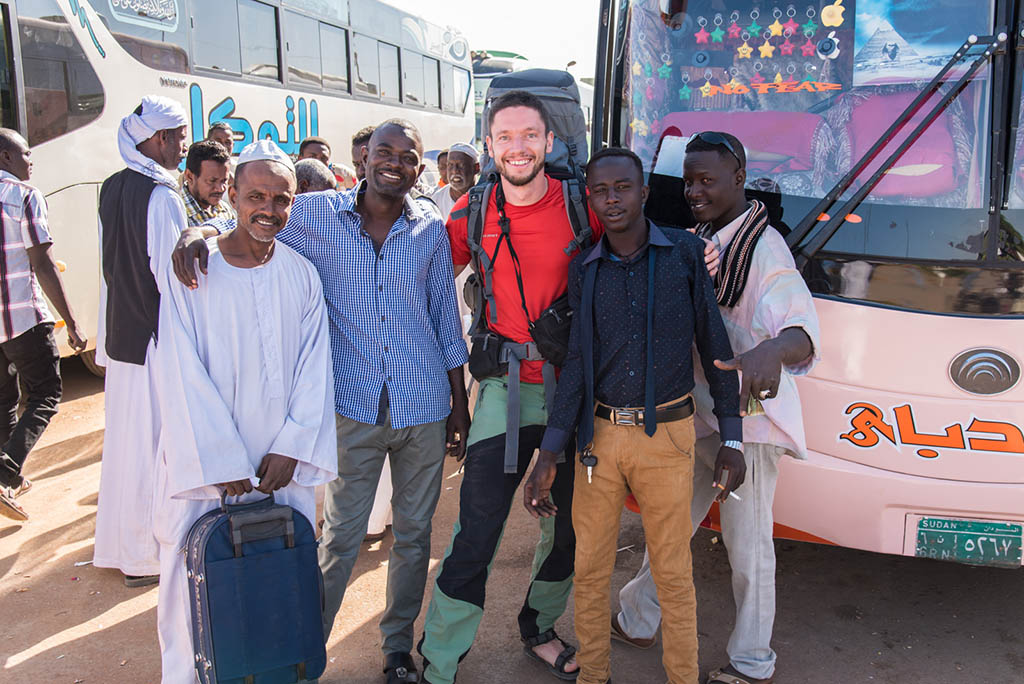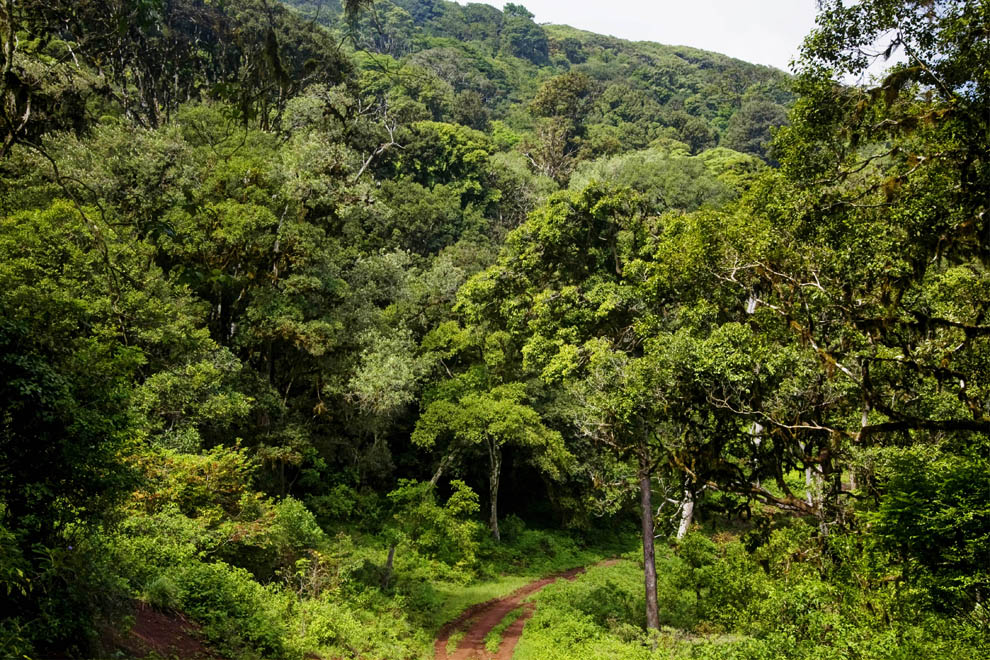After spending three days in Khartoum, it was time to leave and explore other parts of Sudan. I set out towards Bagrawiyah, a distance of more than 200 km from the Sudanese capital, where the remains of the Meroitic temples and pyramids rise from the arid and inhospitable terrain. The ancient Nile city of Meroë was the seat of power of Kush, an ancient kingdom and rival to Egypt.
Drama on the road
There was a moment of drama as the coach stopped in the middle of nowhere, adjacent a small house with a group of people around it. Half of the passengers got off the coach and some of them joined the group around the house. After 15 minutes, a section of the people wildly gesticulating rushed on to the highway and blocked it. A couple of trucks, some loaded with steel and cement, forced their way through the crowd, while others drove around. I had no idea what’s going on and no one could explain it to me. I decided to stay put in the bus until I could figure out what was happening. I always relied on people being able to speak English but now I was outside Khartoum and hardly anybody spoke English. Fortunately, the situation dissipated and the crowd on the highway dispersed and we proceeded with the journey.
Temples in the Desert
The Meroitic temples of Musawarat es -Sufra and Nagaa are 35 and 50km off the highway in the Nubian Desert in eastern Sudan, along the banks of the Nile River.
In 1837, a German nobleman called Pückler-Muskau visited these places and carved his name in the walls of the temples. Unfortunately, many others followed his bad example. Almost all the Nubian pyramids have been plundered by tomb raiders looking for treasure—sadly causing significant damage to these sites over the years. In the 1960s and 70s, archeological expeditions from the Humboldt University of Berlin restored parts of the temples.
The great enclosure of Musawarat es-Sufra
Getting there was quite an adventure as my taxi driver was determined to maneuver through this arid, take-no-prisoners endless expanse of sand road. The drive was a test of mettle and guts considering that this was a tiny car. We got to the temples, but the car really took a beating.
The poor car was definitely not made for this environment
The Apedemak temple in Musawarat es-Sufra
Ram sculpture at the entrance of Amun temple in Nagaa
Inside the Amun temple in Nagaa
Scanning the guest book, there seemed to be an average of one or two guests per day, and the day of my visit was no different as me and my taxi driver had the site all to ourselves. There are almost no tourists, just the occasional villagers or desert nomads. A series of economic sanctions imposed by various Western nations throughout the course of the country’s civil war and the conflict in Darfur is no doubt responsible for the lack of foreign visitors.
I admire the Nomads who live in this harsh environment
The pyramids of Meroe
The ancient city Meroë, a UNESCO World Heritage site was once the center of a powerful civilization and served as the capital city of Kush which ruled the area for more than 900 years. The grand architecture and works of art bear witness to the lasting splendor that was Kush.
Surrounded by the pyramids of the western group of Meroë
Getting to the pyramids was easy as they are just 2km off the highway. I felt a sense of excitement when I got off the bus, but the feeling quickly dissipated due to the searing heat, the weight of my backpack and my 4.5l of water. Reaching the first pyramids, I was already dripping in sweat. Keep in mind that it was currently winter and the desert is pretty cold (according to my Sudanese colleagues), only 33°C! I definitely wouldn’t survive the summer when temperatures go up to 47°C, certainly not with my backpack 😉.
Sitting alone between the pyramids was a dream come true, clearly a moment to savor.
The northern group of pyramids
I would have liked to stay longer, but I still had to reach the large royal pyramids 4km away. On my way, I met an old man with a camel sitting in the shade of a tree. Instantly, he waved his hands motioning me to come over. He offered me water with lemon juice, I, in turn, gave him a Muesli bar, and in return got one more drink. I realized that Sudanese don’t accept a tie when it comes to gifts 😉
The nomad who was kind enough to share his water with me
On reaching the royal pyramids of Meroe, I recognized Edin and Ahmed. I had met with them at the hotel in the morning before embarking on this trip. Ahmed is a 2nd-year medical student at the University of Shendi and Edin is a Swiss adventurer who has traveled through Central Asia and Latin America and was now on an expedition in Sudan. I offered to share my tent with both of them for the night. As night fell the hazy heat of day lifted to reveal the stars, just gazing at the midnight blue canvass above stole every thought from my mind, there was the constellation of stars above and a backdrop of the moon engulfing the vast pyramid complexes – another moment to savor!
Preparing the drone for some sunset shots (picture by Edin Ponjevic)
I can confirm that riding a camel is definitely uncomfortable 😉
In Meroe, I witnessed ongoing excavations of the pyramids conducted by the Humboldt University of Berlin, the German Archeological Institute and the University of Muenster. I am happy that all these undertakings are taking place to study and preserve these stunning, lesser-known pyramids.
The ground above the tunnel to the burial chamber has to be reinforced with concrete before the works can start
.
The pyramids of Meroë hold the fragile footprints of a mysterious and long-forgotten civilization, much smaller but just as impressive as the more famous Egyptian ones. More than 200 are concentrated in one location, enough to astound visitors and historians alike, and it is unusual that an archaeological site of such significance has almost no tourists.
Read more about Thomas, his travels and adventures at his website photoneer.de check out his videos on Vimeo and follow him @thephotoneer on Instagram.


























4 Comments
Very captivating. really encouraging and challenging at the same time. our world is beautiful.
Next time Sir try also Green land at slow of Mt Kenya
A quite beautiful place.
Nice scenery. The pics are also amazing. Would like to visit the place.